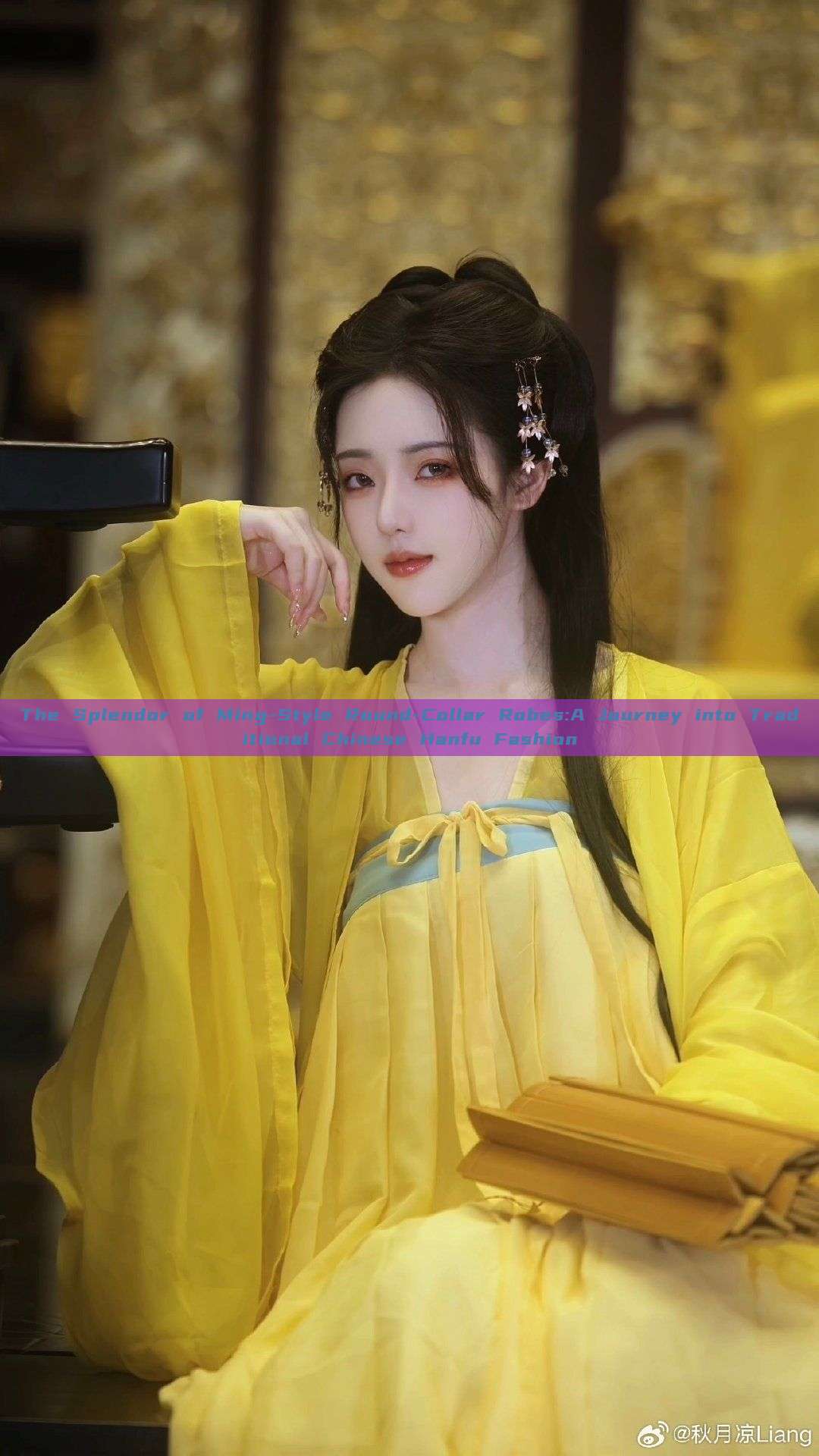In the historical tapestry of Chinese culture, the attire of the Han dynasty stands out as a testament to the elegance and sophistication of traditional fashion. Among the various styles of Hanfu (汉服), the Ming-style round-collar robe (明制圆领袍) is a particularly captivating example, embodying a perfect blend of classical beauty and historical significance.

Originating during the Ming dynasty (1368-1644), this type of robe was worn by both the commoners and the nobility. It featured a distinct round collar that was characteristic of the era, along with a graceful silhouette that accentuated the wearer's figure. The robe was usually made of silk or other luxurious materials, and was adorned with intricate patterns and designs, reflecting the cultural richness and craftsmanship of the time.
The Ming-style round-collar robe is a symbol of balance and harmony. Its design philosophy reflects the traditional aesthetics of simplicity and elegance, with a focus on symmetry and proportion. The round collar, which was typically worn over the neck without any buttons or fasteners, is particularly noteworthy for its graceful curve that complements the wearer's posture. The robe itself is usually loose-fitting, allowing for freedom of movement while maintaining a graceful appearance.
The color palette of the Ming-style round-collar robe is equally fascinating. While the exact colors worn by different individuals may vary, the most common hues were deep reds, bright yellows, and rich blues, reflecting the cultural significance of these colors in Chinese tradition. These vibrant colors not only enhanced the wearer's dignity but also added to the overall beauty of the robe.
The craftsmanship involved in creating a Ming-style round-collar robe is remarkable. The materials used were carefully selected for their quality and durability, with silk being the most preferred choice due to its elegance and comfort. The robes were often adorned with intricate patterns and designs that were either embroidered or printed, using techniques that were perfected over centuries. These patterns often featured symbols of good luck and prosperity, such as flowers, birds, and clouds, adding to the robe's aesthetic value.
In modern times, the Ming-style round-collar robe has experienced a revival, with many people embracing it as a symbol of cultural heritage and traditional values. It is often worn during festivals and special occasions, as well as for everyday wear by those who appreciate traditional fashion. The modern versions of this robe are often made using modern materials and techniques, but still retain the essence and elegance of the original design.
The Ming-style round-collar robe is not just a piece of clothing; it is a symbol of cultural continuity and historical significance. It represents a bridge between the past and present, allowing modern individuals to connect with their cultural roots while embracing contemporary values. As we delve deeper into this fascinating piece of traditional fashion, we discover a rich tapestry of history, culture, and beauty that continues to inspire and captivate people across the globe.
In conclusion, the Ming-style round-collar robe is an embodiment of traditional Chinese fashion that continues to captivate hearts across the world. Its elegance, balance, and historical significance make it a timeless piece of attire that represents not just beauty but also cultural continuity. As we celebrate its beauty and legacy, we also honor the rich tapestry of history and culture that it represents.





